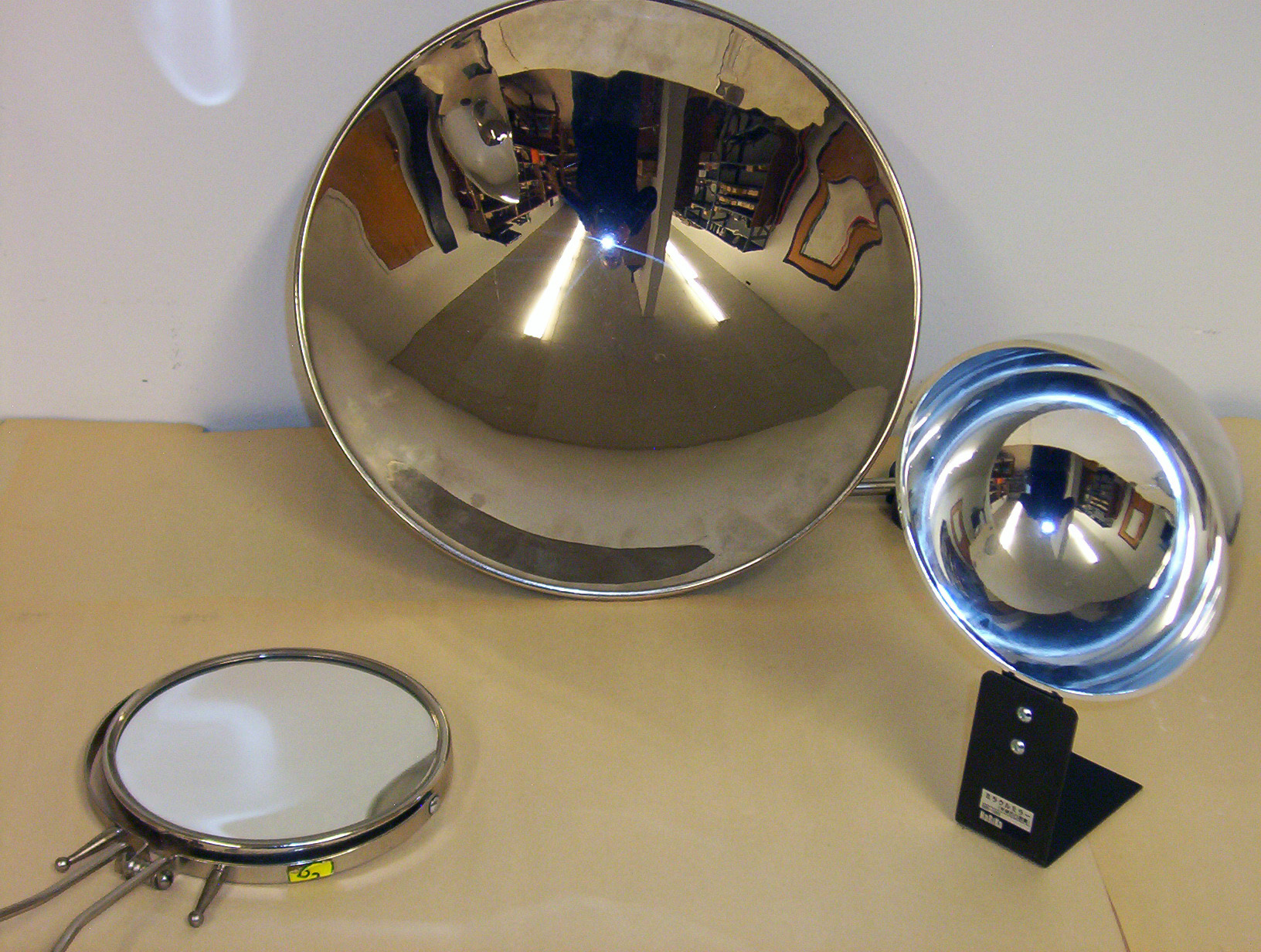Demonstrate image formation with an assortment of spherical mirrors.
These mirrors are used as lab demos before the Phys104 Spherical Mirrors experiment.
The group of three mirrors shown below are used to represent the formation of an image reflected from a concave or convex spherical surface. It makes a good companion to a discussion of image formation by ray tracing. This demo is best accomplished by passing the mirrors around to each student.
- The Makeup Mirror: This mirror has both flat (plane) and concave sides, and both form a virtual image. The focal length of the concave side is the very long so that you can comfortably hold the mirror a few inches from your face and produce an upright, magnified virtual image. Useful for plucking those nasty nose hairs
- Large Concave Mirror: We own 2 of these large (D ≈ 12") metal mirrors. They are deeply curved, and when holding the mirror casually, students will see an inverted, real image. Have students bring the mirror really close to their face, so that their nose is nearly touching the mirror, and ask them what they see. This position is closer to the mirror than the focal point, so they will see an extremely large, upright (virtual) image. Tell them they can see into their brain, and if they don't laugh or are freaked out they're probably brain-dead and will be the author of one of your bad course evals
- Concave & Convex Mirror: This small plastic mirror has deeply curved concave and convex sides. Students should note the difference in the orientation of the (real) image observed from both sides: inverted on the concave side, upright on the convex side. Tell students they can do the same experiment with both sides of a shiny spoon
LDL-B4 and LDL-B5. Check both shelves for assorted mirror goodies.
- Makeup Mirror (plane & long-focal-length concave)
- Large Concave Mirror (short focal length, deeply curved)
- Concave & Convex Mirror
